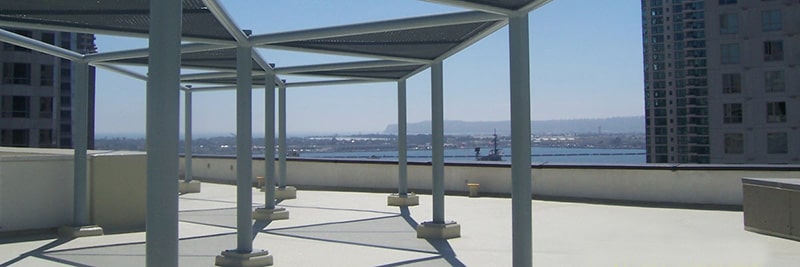Modified bituminous sheets are made by combining.
Blistering modified bitumen roofing.
Modified bitumen is a type of asphalt product that can be applied in a number of ways to the roof in both hot and cold temperatures.
The resulting mixture is called modified bitumen.
Blisters in a modified bitumen roof.
Keep in mind that this particular repair method is only advisable if the membrane is otherwise undamaged.
Modified bitumen is an excellent material for covering a roof but it can be made even more durable through the addition of rubberized coatings.
Alternatively on a bitumen roof you may be able to cut an x into the blister and then peel back the loose membrane layers.
Their mechanical behaviour was characterized by tensile tests.
Flat roof blisters typically start as lamination voids within the system or product and grow larger.
Modified bitumen roofing was designed to improve the original version by adding substances like app atactic polypropylene.
One of the longer lasting roofing options for flat roofs is bitumen roofing or a modified bitumen roof.
Bitumen roof if the membrane.
Roofing membranes for low slope application are generally asphalt or polymer based 1 bitumen has been used as a roof water proofing agent for many years.
Unfortunately some manufacturers do not use enough app to save money and this means the modified bitumen roofing.
Blistering in sbs polymer modified bituminous roofing membrane systems 1.
This made sure that the newer systems were resistant to uv light oxidation cracking and blistering.
Membrane systems are most susceptible to blistering because blisters are formed by voids between the plies or at the point between the substrate and the membrane.
A roof blister is a pocket of air trapped between the layers of a roof membrane between the components of a roof assembly or within a layered roofing product such as an asphalt shingle.
Bitumen roof advantages and disadvantages.
They perform well in both extremely hot and bitterly cold conditions perfect for the weather extremes common across new jersey and nearby states.
Fill the void underneath the membrane with bitumen and then press the membrane back into place.
As an alternative on asphalt bur membranes only two plies of smooth surfaced modified bitumen sheets.
Tpo roofs have been around since the 1990s.
Roof blisters are not limited to one type of roof system.
Membrane samples were removed from several existing modified bituminous roofs containing blisters.
Modified bitumen roofing has been around since the 1970s when it was developed to address ongoing issues with traditional asphalt roofs.
Summary the cause of blistering in modified bituminous roofing membrane systems was investigated.
All conventional low slope roof systems experience blisters in some form.
Roof systems with membranes are more prone to blistering because blisters are formed by gaps between the membrane plies or between the underlying substrate and the membrane.

